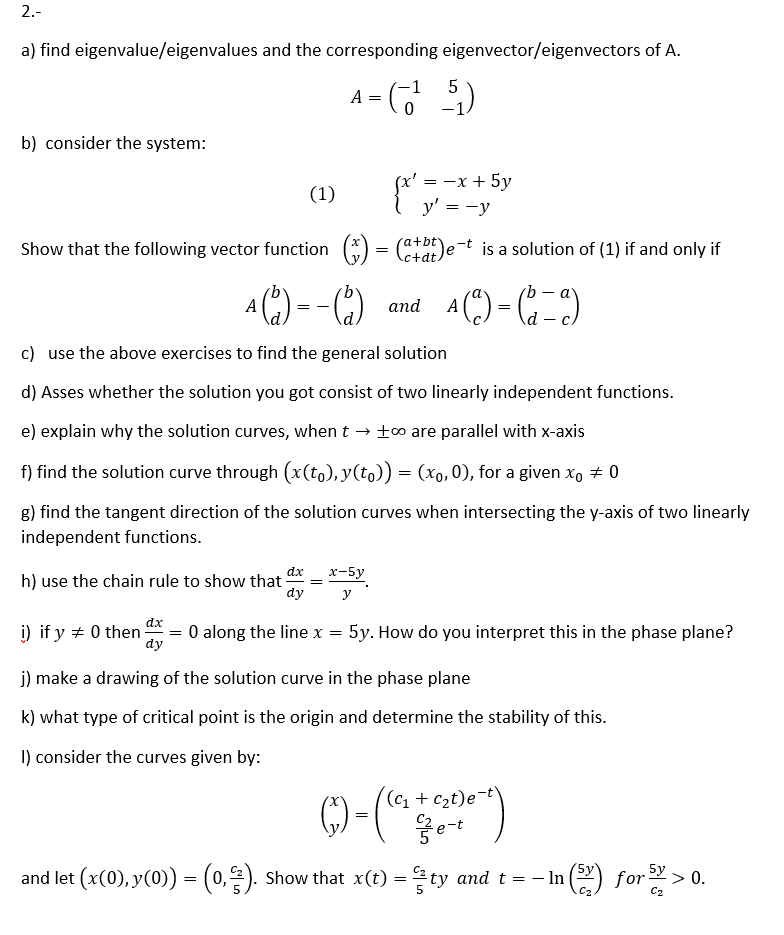2.- a) find eigenvalue/eigenvalues and the corresponding eigenvector/eigenvectors of A. A- () 5
2.- a) find eigenvalue/eigenvalues and the corresponding eigenvector/eigenvectors of A. A- () 5
Linear Algebra: A Modern Introduction
4th Edition
ISBN:9781285463247
Author:David Poole
Publisher:David Poole
Chapter4: Eigenvalues And Eigenvectors
Section4.6: Applications And The Perron-frobenius Theorem
Problem 70EQ
Related questions
Question
2a

Transcribed Image Text:2.-
a) find eigenvalue/eigenvalues and the corresponding eigenvector/eigenvectors of A.
A - )
5
b) consider the system:
(x' = -x + 5y
y' = -y
(1)
Show that the following vector function
(*DE)e-t is a solution of (1) if and only if
.c+dt
A (") - C-)
A
and
= -
c) use the above exercises to find the general solution
d) Asses whether the solution you got consist of two linearly independent functions.
e) explain why the solution curves, when t → t0 are parallel with x-axis
f) find the solution curve through (x(to), y(to)) = (xo,0), for a given x, + 0
g) find the tangent direction of the solution curves when intersecting the y-axis of two linearly
independent functions.
dx
x-5y
=
h) use the chain rule to show that-
dy
у
dx
i) if y + 0 then
dy
O along the line x
5y. How do you interpret this in the phase plane?
j) make a drawing of the solution curve in the phase plane
k) what type of critical point is the origin and determine the stability of this.
I) consider the curves given by:
G)-(*
(c1 + c2t)e
5y
and let (x(0), y(0)) = (0,2). Show that x(t) = ty and t = – In
1(2) for> 0.
C2
Expert Solution
This question has been solved!
Explore an expertly crafted, step-by-step solution for a thorough understanding of key concepts.
Step by step
Solved in 2 steps with 2 images

Recommended textbooks for you

Linear Algebra: A Modern Introduction
Algebra
ISBN:
9781285463247
Author:
David Poole
Publisher:
Cengage Learning

Linear Algebra: A Modern Introduction
Algebra
ISBN:
9781285463247
Author:
David Poole
Publisher:
Cengage Learning